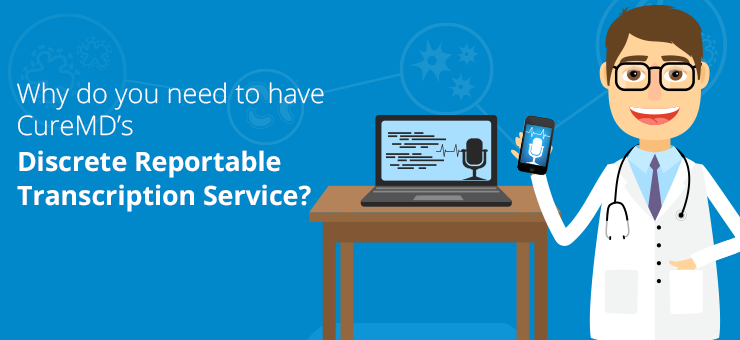The Background
When the HITECH Act became law in 2009, it aimed to stimulate the adoption of Electronic Health Records (EHRs) across the health care industry; the clinical data gathered from these systems would aid in disease prevention in the coming years.
By 2013, above 80% of all office-based physicians had adopted some variant of electronic health technology, the 2014 Black Book Rankings Survey for Top Ambulatory EHR Vendors reported. However, ever-burgeoning government regulations increased with EHR-adoption rates, as did numerous workflow-related physician concerns.
Among these workflow concerns, none have been bigger than electronic physician documentation to comply with stringent federal documentation requirements. And with ICD-10 entering the picture, the whole dynamics of patient encounters will take a jolt; experts are anticipating a 15-20% increase in physician documentation after October 1, 2015.
Step 1 of the process, however, is to know that you have different options for managing physician documentation.
How do most physicians manage patient documentation?
Point and Click: During a patient visit, practice staff enters clinical data in the EHR. For physicians who are not tech savvy, and those with a small staff base, this reduces the number of patients they are able to see each day. They also find it difficult to concentrate on the patient, with half their focus on the screen.
Are there any alternatives with ICD-10 fast approaching?
Scribes: By entering data into your system during a patient visit, scribes can ensure that you can focus on your patient. However, patients might not be as comfortable with another individual in the room. Furthermore, scribes can cost as much as $75,000 per year.
Alternatively, a scribe who’d give you a transcription file of the whole clinical encounter would cost lesser, but manually identifying and entering relevant information into your EHR will require a lot of extra time.
Speech/voice recognition software: Although a more cost-effective method in contrast to scribes, words are often misinterpreted by such software which means that physicians have to manually locate errors in their records. Additionally, unspotted mistakes in your clinical records will translate into claim denials.
Transcription service: You would record your patient encounter, not having to type everything onto the system, and send it to the transcription vendors.
Similar to scribes, some vendors will give you files of the complete encounter, leaving you to extract and then enter data into your system.
A good vendor, however, would enter this data into specific fields of your EHR, saving you the hassle and a lot of time. CureMD’s Premium Discrete Reportable Transcription (DRT) service does so as well and was launched after months of research and testing in order to streamline physician documentation in the wake of ICD-10.
Standout features of CureMD’s Premium Discrete Reportable Transcription (DRT) service?
Discrete: Our quality analysts ensure that the relevant information from the recording file is populated into specific fields of your EHR as soon as the transcription narrative is generated and double-checked.
That means that within 24 hours, all the CPT-fields in your EHR will contain the relevant CPT codes, patient allergies, and medication data will be filled in, as will every other relevant word occurred during the patient encounters.
Compatibility: Unlike other transcription services which need to be integrated with EHRs, CureMD clients will have the added benefit of getting a seamless, comprehensive solution from one vendor.
Recording methods: You can record patient encounters using an official mobile app, your telephone receiver, or a password protected FTP server.
Privacy and compliance: The DRT meets all Meaningful Use Stage 2 & HIPAA compliance standards, and we are up-to-date with all necessary confidentiality and data security laws.
Cost: Many transcribers charge for the total duration of a transcription narrative, which includes the cost for minutes where the provider is not even speaking during a patient visit.
At CureMD, we’re only charging a modest rate based on your speaking time. Additionally, a minimal one-time charge is all you require to subscribe to this service, and you won’t be bound by any contract or commitment.
Interested in learning out more about our Premium DRT service?
Contact us at (718) 684 9298 x 382, shoot an email to joe.martin@curemd.com, or simply fill out the form below.

Join the Discussion!